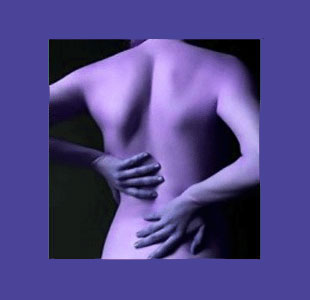
Many people experience lower back pain from bending at the waist. Why does bending incite back pain and what can be done to bend safely? These questions are some of the most often received here at The Cure Back Pain Network, so we thought it time to address the answers in this dedicated dialog.
Bending can occur forwards (spinal flexion), backwards (spinal extension) or sideways (lateral bending). Patients seem most concerned with flexion, since this is certainly the task most required of the lumbar spine in association with typical daily exertions.
This focused discussion details the incidence of bending-related low back pain. We will focus on why bending might create painful expressions in the lower back, as well as provide some important guidance on how to bend in order to prevent pain and injury from affecting your life.
Occurrence of Lower Back Pain from Bending
Most patients are worried about injuring, reinjuring or aggravating their lower back region when bending forward to perform physical labor or exercise. The majority of questions that we receive on this topic ask if it is ok for patients to continue to bend and lift or bend and exercise.
Flexion-related injury while lifting or exercising is the most common occurrence when it comes to bending lower back pain, since flexion is the position most frequently assumed by the lumbar spine. Extension-related bending low back pain is far less common, but can occur at far smaller degrees of motion than flexion. Meanwhile lateral bending low back pain is the least often reported, although patients do often cite painful expressions in the anatomy of the ribs in association with lateral movement.
The majority of people cite acutely painful presentations of sudden pain immediately upon bending. A significant percentage of people who report bending-related pain often cite hearing a cracking, popping sound and feeling something sharp and painful in their back. A minority of patients report gradually feeling pain long after extended periods of strenuous exertion.
Does Bending Cause Lower Back Pain?
There are many possible origins of bending-related lower back pain that might be sourced in the spinal anatomy, the surrounding musculature or involve completely nonstructural presentations that are the direct results of the mindbody process:
Soft tissue strain or injury is the most common cause of acute lower back pain that is experienced when bending. Many people demonstrate chronic tension of the postural musculature and hamstrings and these conditions can create incredible susceptibility to injury when bending suddenly.
Overuse is another very common form of muscular, ligamentous or tendon strain. Working hard for a long time can cause the muscles to fatigue and suffer small tears that may become very painful once the work is finished and inflammation sets in.
A normal muscular paraspinal anatomy can still suffer acute injury even in the absence of tension if it is not conditioned to bending movement or demonstrates a distinct lack of natural flexibility.
Herniated discs can occur spontaneously in some instances, especially when already compromised by marked degeneration, bulging or annular tearing. Note that most herniated discs are not painful.
Preexisting spinal structural issues might be aggravated by bending. Conditions such as spinal stenosis, foraminal stenosis, spondylolisthesis, scoliosis, hyperlordosis and facet joint syndrome might all react negatively to sudden commands to bend.
Ischemia is a very typical source of activity-related pain, no matter what the activity is. The mind often uses the opportunity of physical exertion to create a very convincing expression of pain that seems to be related to the movement, although it is actually of psychogenic causation.
Preventing Lower Back Pain from Bending
In order to prevent bending lower back pain, there are some guidelines that are helpful to remember each and every time you must perform exercise or physical labor that includes bending:
Before working or working out, it is important to stretch and warm up your back muscles. Be sure to talk to your physical therapists if you need to know exactly how to successfully stretch your back prior to exertion.
Try not to bend beyond your limit in terms of degree of spinal curvature. Likewise, try not to lift with your back, but instead use your legs to provide the force need to lift with a straight back.
If you know that you have difficulty with certain postures or positions, discuss these concerns with your doctor to see if they have structural merit and should be avoided or if the problematic bending positions are merely conditioned responses. If they are programmed, it is best to overcome them in order to avoid the eventuality of mindbody pain from occurring when you must perform such bending actions.
On a related note, it is always crucial to maintain optimal mindbody health to reduce the chances of suffering from a psychosomatic pain syndrome that account for a substantial amount of all lower back pain conditions. Do not repress or suppress emotions. Instead, take the time to get in touch with your innermost self at every opportunity. We highly recommend learning more about integrating knowledge therapy techniques into the prevention and care routines for all people who are affected by or fear lower back pain. Our acclaimed books provide many proven practices that can help!
Lower Back Pain > Low Back Pain > Lower Back Pain from Bending





